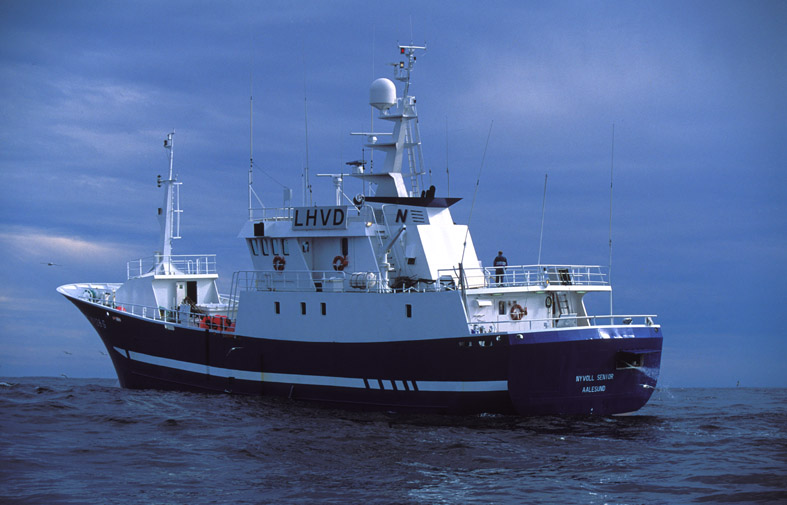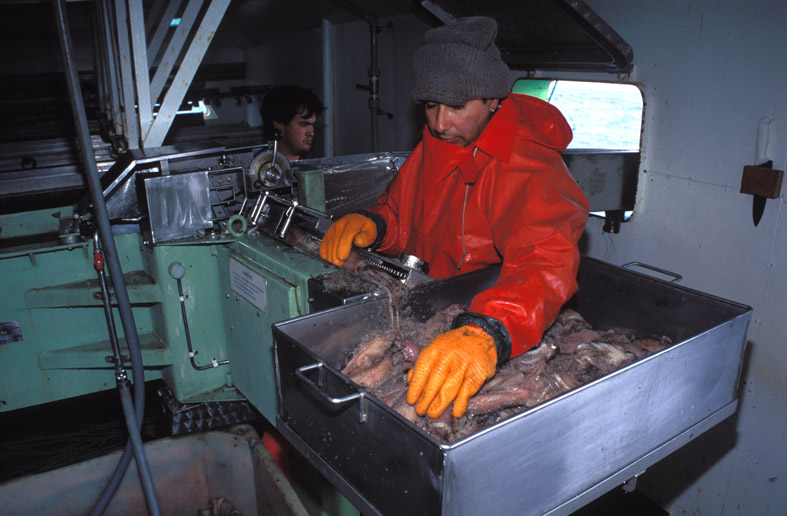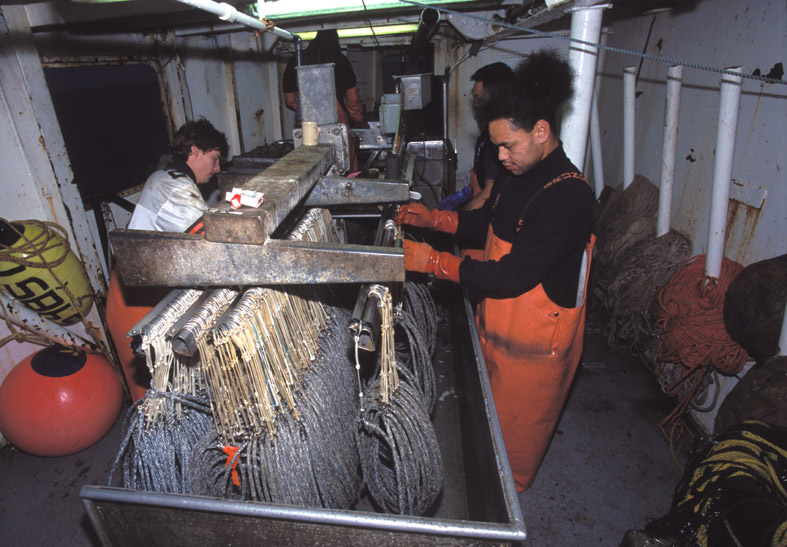Here Graham Robertson describes the successful development of IW gear in collaboration with Sealord and Fiskevegn. Its a great example of what can be achieved. Graham is Scientific Adviser to Skadia Tech.

A typical Norwegian autoliner capable of setting 10,000 hooks per hour
The problem
Every year up to 300,000 seabirds are hooked and drowned on gear deployed from commercial longline fishing vessels around the world. The deaths are accidental (unintended), but that does not lessen their impact on vulnerable seabird populations, which have been decreasing since the 1980s when issue first came to light. One fishing practice that has exacted a heavy toll on seabirds is the autoline – or Norwegian– method for deep water fish such as Ling and Patagonian toothfish. Autoline vessels set a single long line – effectively a length of rope with hooks attached every 1.4 m– through an automatic baiting machine, a labour-saving device capable of setting 10,000 baited hooks per hour. The problem this presents for seabirds has less to do with the huge number of hooks involved than the behaviour of the longline once in the water. Longlines are set from vessel sterns directly into the propellor turbulence zone behind vessel. Turbulent upwelling water prevents lines from sinking, sometimes for 15 seconds or so with the larger vessels, by which time gear might be 40 or 50 m astern. Longlines replete with baited hooks held aloft in prop wash make easy targets for seabirds, which attack them with gay abandon, unaware they are playing Russian roulette with their lives.

A baiting machine on a Norwegian style autoliner
The solution
Finding a solution to this problem was not straightforward. Changing the setting position on the vessel was not practical so the solution was to develop a longline with enough internal mass along its length to penetrate the turbulence zone and sink the moment it hit the water. In the year 2000, after collaborating in a seabird deterrent research project off the coast of Norway, I met with longline and autobaiter manufacturer Fiskevegn Company to explore ideas to improve longline sink rates. It transpired that Fiskevegn had already been approached about this by the New Zealand fishing company Sealord Group. Sealord operated Ling and Toothfish autoliners in New Zealand and Antarctica’s Ross Sea, and was on the look-out for a more user-friendly alternative to their existing line weighting system, which was too cumbersome and labour intensive (heavy steel sinkers attached each time the line was set, and removed when hauled). The weighting regime ensured compliance to a minimum gear sink rate standard required by regulation.
The upshot of the meeting was the formation of a three-way collaboration, involving an innovative gear manufacturer (Fiskevegn), a fishing company (Sealord) with an operational imperative to maximise gear sink rates to reduce seabird bycatch, and a seabird bycatch researcher (yours truly). Fiskevegn produced a longline with a beaded lead core – integrated weight (IW) longline. Samples containing 25 g/m, 50 g/m, 75 g/m and 100 g/m lead cores were trialled on a Sealord autoliner with the 50 g/m version considered the ideal compromise between sink characteristics, operational practicality and cost. Critically, the line contained enough internal weight to overcome propeller upwellings and sink the instant it entered the water.
The next step was to test the seabird deterrent effectiveness of the new 50 g/m IW longline against conventional (unweighted) longline. The white-chinned petrel, a consummate diver exceptionally difficult to deter, was central to the experiments which were conducted in 2002 and 2003 off southern New Zealand. The results were remarkable: IW longline reduced seabird mortality by 98% and 93% compared to the conventional longline, with no detrimental effects on fish catch.
Integrated weight longline and snoods ready to go
Implementation
In 2004 the findings were presented to the Commission for the Conservation of Antarctic Marine Living Resources, which has jurisdiction over Southern Ocean fisheries, and entered into force via CCAMLRs schedule of agreed conservation measures. All autoline vessels operating in the CCAMLR Convention area (Southern Ocean) promptly converted to IW longline and the effects were immediately apparent, none more so that in the Kerguelen Island (French sub Antarctic region) toothfish fishery. Prior to the CCAMLRs endorsement of IW longline the six autoline vessels operating around Kerguelen took a combined total of 12,000-13,000 seabirds per year. Following the introduction of IW longline the number of fatalities dropped to around 700 seabirds per year, a major outcome for seabird conservation and testament to the feasibility of ecologically sustainable fishing.
IW longline continues to save the lives of countless numbers of seabirds wherever autoline fisheries and longline vulnerable seabirds overlap.
